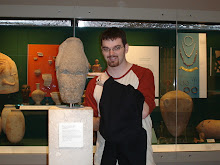Carolyn Osiek and David L. Balch, in Families in the New Testament World: Households and House Churches (1997), do just the opposite: they seek and find continuity between the codes of the Greeks and Romans and those in the Colossians and Ephesians, while finding much discontinuity between the authentic Pauline letters and those that are pseudonymous. To highlight these points I want to provide several quotes from their study. While the words of this first quote are particularly directed at Colossians 3.18-4.1, they are relevant for Ephesians 5:
Colossians is probably the earliest deutero-Pauline letter written in Paul's name. In great contrast to the leadership of women and their active participation in the worship of early Pauline assemblies, this pseudonymous letter assimilates Pauline household values to Aristotelian politics. The structure of the household code in 3:18-4:1 with its (1) three pairs, (2) related reciprocally, (3) emphasizing three domestic groups' (wives, children, slaves) subordination to the paterfamilias in his three roles (husband, father, master -- the same male) is ultimately dependent on Aristotle's sociological description and philosophical/political justification of Greek domestic life. "The primary and smallest parts of the household are master and slave, and husband and wife, father and children...There is also a department...called the art of getting wealth." [Aristotle, Pol. I 1253b 7-8, 12-14] Aristotle is primarily concerned to order the relationship between each of these pairs as that between ruler and subordinate, the same primary concern reflected centuries later when the deutero-Pauline letters emphasize these three pairs of relationships, a domestic political structure absent from the earlier, authentic Pauline letters. (119)
About a paragraph later, they continue:
This structured domestic code [as found in Colossians] has its origin in Aristotle, but the ethic was reinforced by Emperor Augustus. According to Dio Cassius, Octavian called on his soldiers "to conquer and rule all mankind, to allow no woman to make herself equal to a man." [Dio Cassius, Roman History 50.28.3]...Further, Augustus's politics former the social psychology of the time; the competition, hierarchy, and patriarchy of Roman imperial society were internalized by individuals and groups. (119)
Later they describe the time period of the deutero-Pauline literature and the sociological realities thereof:
As eschatological urgency wanes and the church acculturates socially, the social reversals that Jesus and Paul's eschatological thought had hoped for disappear... (120).
Lastly, writing now specifically about Ephesians 5.21-33, they state:
As Colossians expands the slave/master exhortations, so Ephesians emphasizes the wife/husband pair, which the author interprets in light of Christ's relationship to the church, cementing the inferior position of the wife christologically. (121)
As I believe has been fairly obvious, Osiek and Balch forcefully express that Colossians and Ephesians come more into line with Aristotelian thought, whereas Jesus and Paul had granted more freedom and equality to wives, children, and slaves. I, however, think that the case has been overstated because there is plenty of room in Ephesians 5.21-33 to see not only significant discontinuity with the Greco-Roman household codes but also an important weakening of wifely submission and husbandly authority.
I believe that Keener would respond Osiek and Balch in this way:
While such a view [as theirs] has some evidence to support it, it rests on two hypotheses requiring proof: first, that the latter canonical Pauline writings are not genuine, and second, a particular reading of these letters...[Regarding the latter point:] The text of Ephesians itself actually does not support the contention that its writer has become more chauvinistic than the Paul of the earlier letters. (Dictionary of Paul and His Letters, "Man and Woman," [1993] 587-588)
I sympathize with Keener extensively. I have argued elsewhere that to read Ephesians 5 as a support for imposing strict subordination on wives is not supported by the imagery used there.
To conclude, while I appreciate Osiek and Balch's work and I am happy that they pointed me to some good primary source material on this subject, I think that they fail to allow the author of Ephesians to say what he was trying to say: namely, that husbands and wives should each put the interests of the other before that of their own.
One last thing, thanks to Chris and Tim for linking to my last post!
Click here to read other posts that I have written on this issue.





No comments:
Post a Comment